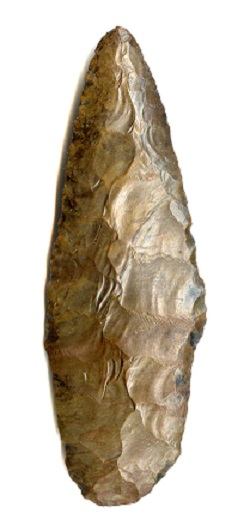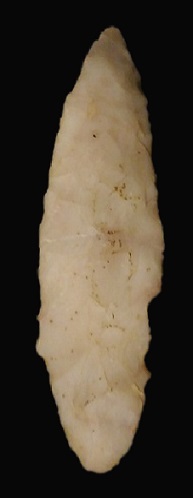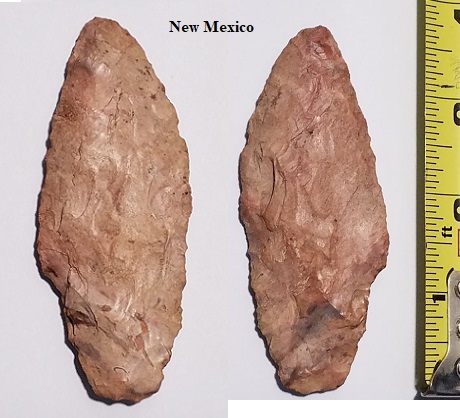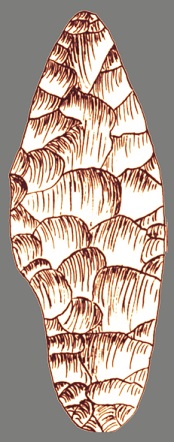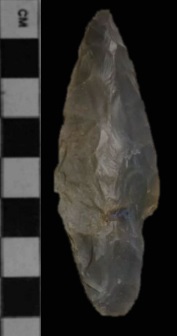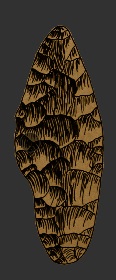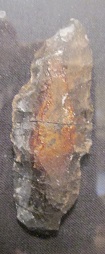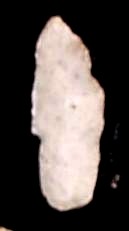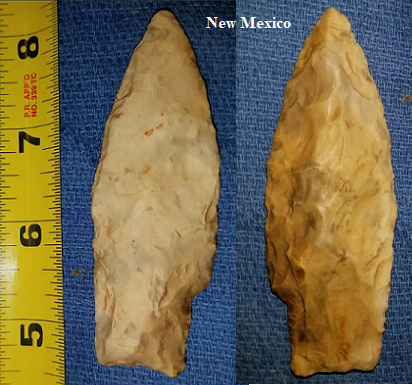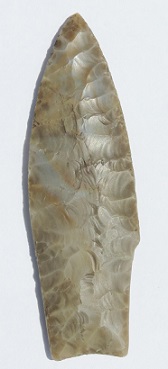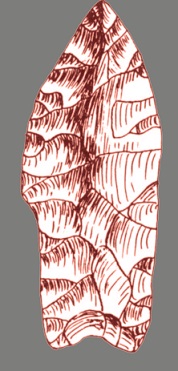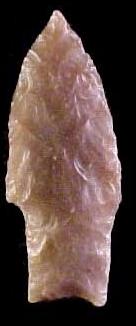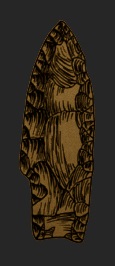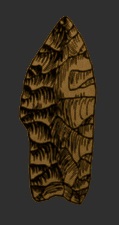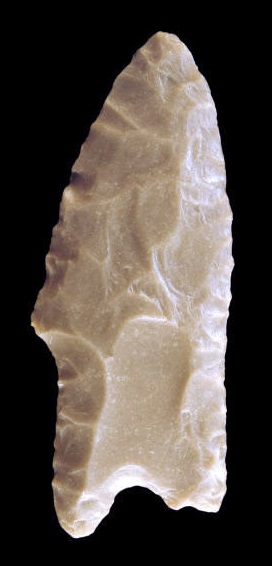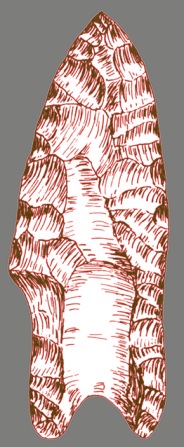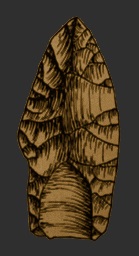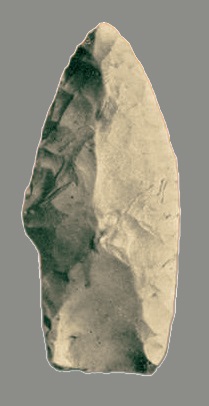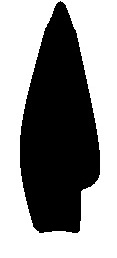 Sandia Type II and Type III
Sandia Type II and Type IIIIdentified By: Frank C. Hibbins
Named For: Type Site
Date Identified: 1941
Type Site: Sandia Cave, Sandoval County, New Mexico
Hibbens was an anthropologist and professor at the University of New Mexico. Thus type was named in a professional publication, but has been discredited since that time (see additional comments). This is a controversial type.
Controversial / Problematic Type
Cluster:
Type I: This is a medium stemmed point with an elliptical cross section. The blade is excurvate with one blade extending down to the base of the point. The other blade has a weak shoulder that is at an upward angle. The stem may vary from straight to contracting. The base may range from convex to pointed. This point has a random flaking pattern. Type II points tend to have a higher quality of workmanship compared to Type I point.
Type II: This is a medium stemmed point with a diamond shaped cross section. The blade is excurvate with one blade extending down to the base of the point. The other blade has a weak shoulder that is at an upward angle. The stem may vary from straight to contracting. The base may range from straight to concave. This point is carefully made and has a random flaking pattern.
Type III: Same characteristics as the Type II except is fluted.
Total Length - 45 to 90 mm, Stem Length - 18 to 35 mm (typically the stem is 35 to 40 % of the total length, but may range to 32 % or as much as 50% of the total length, Blade Width - 18 to 28 mm, Stem Width at Shoulder - 15 to 25 mm (***based on small sample size***)
This type has caused controversy since it was first named. The first problems arose with the radiocarbon dating of the site. Problems included an ivory that Hibbins admitted was the wrong sample and a mastodon tooth that the lab questioned if it had came from the site and Hibbins admitted that the wrong sample had been sent. Dates are provided based on samples sent to the lab by Kent Bryan, but Bryan never talked about these samples, and the lab had no records of samples sent by Bryan. Hibbins wrote that all Sandia points that were recovered were at levels below a yellow ocher level at the site and all Sandia points were covered in yellow ocher. When controversies arose, the yellow ocher was radiocarbon dated and returned a date of 300,000 years old which questions how samples from the Sandia level provides dates of 15,000 to 20,000 while levels above the Sandia level provided dates of 300,000.
There were also questions on the the fact that 19 Sandia points were recovered and there was a lack of broken examples at the site. Further analysis if the points revealed that many of the points lacked wear, as if protected at the site, while other examples were well weathered as if been exposed to blowing sand. It was also noted that some of the examples were manufactured with fine pressure flaking while others were produced with percussion flaking, and many different types of materials were used. Techniques lead to the belief that the samples were made by many different makers. It was also noted that two of the examples had modern alterations and appeared to have shoulders made with the use of a grinding wheel.
Further complicating is that there has only been one other site in which Sandia type points were recovered, The Lucy Site, New Mexico, which was an open site that was subject to aeolian deflation and produced a mixed assemblage of points that included Clovis, Folsom, Sandia, and other archaic type points.
This point is primarily found from the lower Pecos region and into southern Texas and the central coast of Texas. Honea (1965) points out that similar points have been found in central Texas, Oklahoma, Missouri, Iowa, and possibly Alabama, Alberta, and Saskatchewan.
Date: 14,000 - 10,000 B.P.
Cultural Period: Paleo
Glacial Period: Late Pleistocene
Culture:

